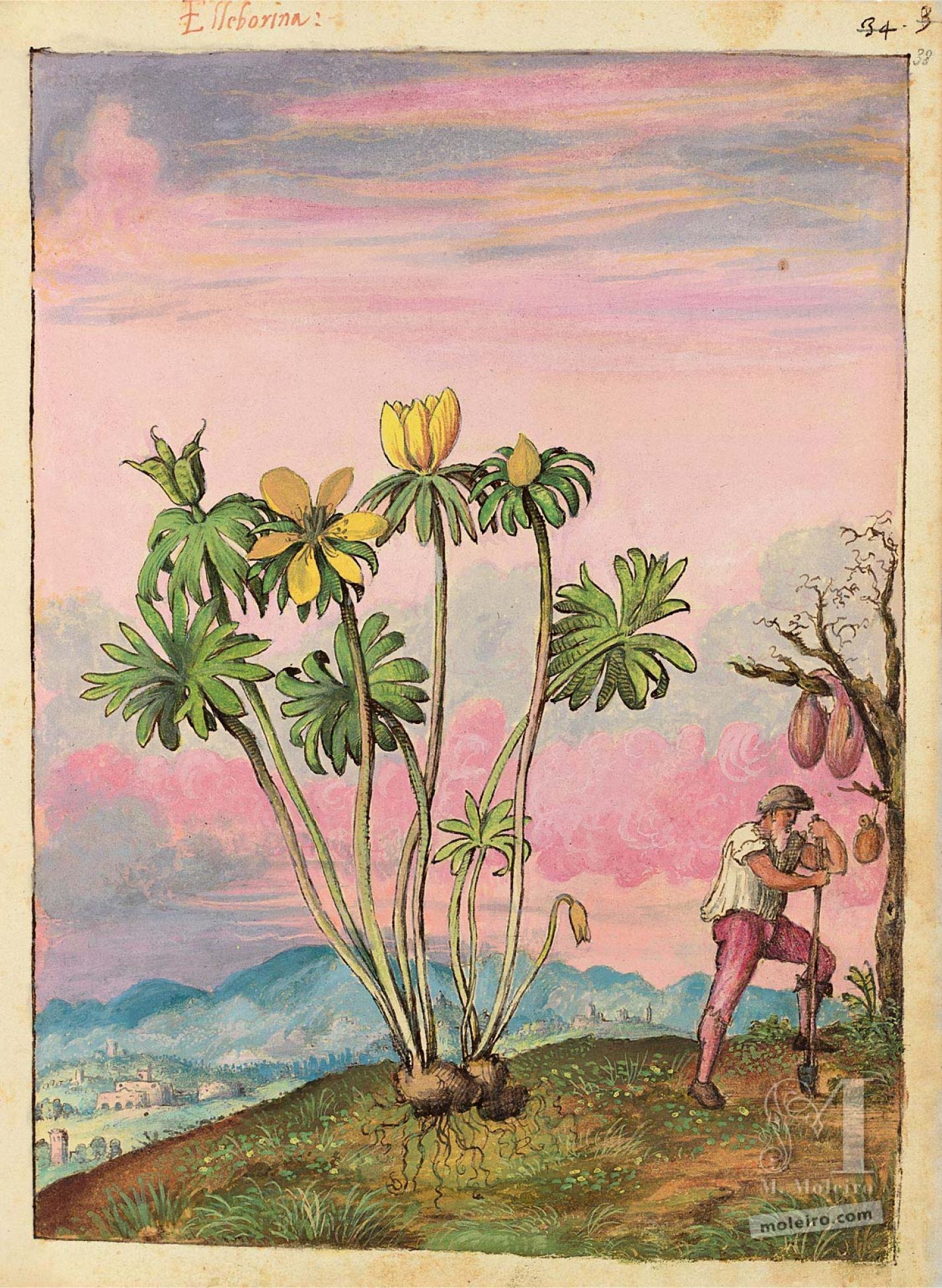Helleborine, also called epipactis, is a small low-spreading plant which bears small leaves; when drunk it is useful against liver malfunction and ingested poisons. (f. 37v)
The text by Dioscorides and Mattioli transcribed here probably refers to the species Herniaria glabra which ancient authors called epipactis or helleborine. The plant in Cibo’s miniature, however, is the winter aconite, so called because it flowers in the cold months of the year. Its specific epithet hyemalis refers to the same thing. It grows on wasteland throughout most of Italy, France, and southeastern Europe. It belongs to the Ranunculaceae family. Cibo includes six other species in this family: Hepatica nobilis, ff. 32r and 170r; Ranunculus ficaria, f. 91r; Helleborus foetidus, f. 89r and Helleborus viridis, f. 95r; Nigella damascena, f. 161r; and Anemone hortensis, f. 174r. Dioscorides does not mention the winter aconite in his work, and no uses of this plant are known. This plant is poisonous due to its cardiac glycoside content, particularly in the rhizomes. Of all European flora, this is one of the most poisonous plants.
Ramón Morales Valverde
Real Jardín Botánico de Madrid
(Extract from the commentary volume of Mattioli's Dioscorides illustrated by Cibo)
